
Prehospital and Disaster Medicine
Scope & Guideline
Uncovering Best Practices for Disaster Preparedness
Introduction
Aims and Scopes
- Emergency Medical Services (EMS):
Research on the protocols, practices, and innovations within EMS, including the use of technology, training, and patient care strategies. - Disaster Medicine and Preparedness:
Studies aimed at improving the response to disasters, including natural disasters, mass casualties, and terrorist attacks, focusing on preparedness, response, and recovery frameworks. - Trauma Care and Management:
Exploration of trauma-related care, including prehospital interventions, triage methods, and outcomes associated with various trauma scenarios. - Public Health and Safety:
Investigations into the public health implications of disasters and emergency situations, including the management of infectious diseases and mental health support. - Ethics and Policy in Emergency Care:
Examination of ethical considerations and policy-making in the realm of emergency medical services and disaster management. - Education and Training in EMS:
Research on educational strategies and training methods for emergency responders, focusing on improving skill sets and operational readiness.
Trending and Emerging
- Technological Integration in EMS:
There is a growing emphasis on the application of advanced technologies in EMS, such as machine learning, telemedicine, and augmented reality, which enhance diagnostic accuracy and operational efficiency. - Mental Health in Disasters:
Research is increasingly addressing the mental health impacts of disasters and traumatic events, highlighting the importance of psychosocial support for victims and responders alike. - Global Health and Disaster Response:
Emerging themes focus on the global dimensions of disaster response, particularly in low-resource settings, emphasizing the need for adaptable and culturally sensitive interventions. - Ethical Implications of Emergency Care:
A noticeable increase in research examining the ethical dilemmas faced by healthcare providers during emergencies, including resource allocation and decision-making processes. - Community-Based Preparedness and Resilience:
There is a trend towards exploring community involvement in disaster preparedness, emphasizing the role of local populations in effective emergency response and recovery efforts.
Declining or Waning
- Traditional Trauma Assessment Techniques:
There appears to be a waning interest in traditional trauma assessment methods, as newer technologies and methodologies, such as telemedicine and portable ultrasound, gain prominence. - Historical Analyses of Terrorism:
Although still relevant, the frequency of historical analyses of terrorism incidents has decreased, possibly due to a shift towards contemporary and operational responses rather than retrospective studies. - Basic First Aid Protocols:
Research focused on basic first aid protocols has become less common, as the field evolves to encompass more complex emergency medical interventions and the integration of technology. - Non-Disaster Related Public Health Issues:
Topics related to general public health that are not directly tied to disasters have seen a decline, as the journal's focus sharpens on immediate disaster response and emergency care. - Non-Emergency Medical Services Research:
There is a noticeable reduction in research that falls outside the scope of emergency medical services, as the journal increasingly emphasizes topics directly related to prehospital care and disaster medicine.
Similar Journals
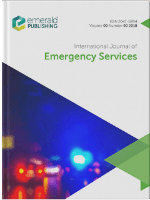
International Journal of Emergency Services
Exploring the forefront of emergency service management.The International Journal of Emergency Services, published by Emerald Group Publishing Ltd, is a pivotal resource in the fields of management science, operations research, and safety research. With its ISSN 2047-0894 and E-ISSN 2047-0908, this journal serves as a platform for innovative research and discourse from 2012 through to 2024. Recognized for its quality, it holds a Q3 ranking in both management and safety categories, demonstrating its commitment to advancing knowledge and practice in emergency services. The journal is particularly valued for its contributions to enhancing operational efficiency, promoting safety, and addressing the evolving challenges faced by emergency service professionals globally. It attracts a diverse readership comprising researchers, practitioners, and students keen to explore cutting-edge findings and methodologies. With access options tailored for academic and professional communities, the International Journal of Emergency Services remains an essential reference for those seeking to improve emergency response frameworks and strategies within the UK and beyond.
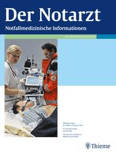
Notarzt
Advancing critical care knowledge for a healthier tomorrow.Notarzt is a well-regarded academic journal published by GEORG THIEME VERLAG KG, focusing on critical care, intensive care medicine, and emergency medicine. With an ISSN of 0177-2309 and an E-ISSN of 1438-8693, this German-based journal has been contributing to the medical field since its inception in 1985. Despite being categorized in the Q4 quartile for both Critical Care and Intensive Care Medicine and Emergency Medicine, Notarzt continues to provide a platform for innovative research, case studies, and developments that inform practitioners and researchers alike. With a publication history spanning significant years such as 1993 and 1999 to 2024, Notarzt is dedicated to improving outcomes in emergency and critical care settings through the dissemination of pivotal findings and comprehensive reviews. Although currently not an Open Access journal, it remains an essential resource for professionals striving to stay abreast of developments in their field.
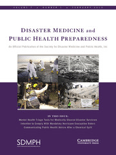
Disaster Medicine and Public Health Preparedness
Fostering excellence in public health preparedness.Disaster Medicine and Public Health Preparedness is a pivotal journal published by Cambridge University Press, dedicated to advancing the field of disaster medicine and public health. With an ISSN of 1935-7893 and an E-ISSN of 1938-744X, this journal holds a commendable place in the academic discourse, featuring a 2023 Scopus ranking of #221 out of 665 in the category of Public Health, Environmental and Occupational Health, placing it in the 66th percentile. It enjoys a Q2 quartile ranking, which underscores its significant contributions to the field. The journal, spanning from 2007 to 2024, serves as a critical platform for researchers, professionals, and students aiming to share innovative findings and best practices in preparing for and responding to public health emergencies. Though not available as Open Access, its rigorous peer-review process ensures high-quality publications that are relevant in addressing contemporary challenges in disaster preparedness. Operating out of the UK, specifically from Edinburgh Building, Shaftesbury Rd, Cambridge, this journal plays an integral role in policy formulation and educational efforts in public health, making it an essential resource for scholars intending to impact the sector meaningfully.
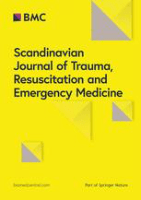
Scandinavian Journal of Trauma Resuscitation & Emergency Medicine
Empowering Clinicians with High-Impact ResearchThe Scandinavian Journal of Trauma Resuscitation & Emergency Medicine, published by BMC, stands as a leading open-access platform dedicated to advancing the fields of trauma, resuscitation, and emergency medicine since its inception in 2008. With an ISSN of 1757-7241 and an impressive track record, this journal has established itself in the top quartile of critical care and emergency medicine, achieving Q1 rankings in both categories for 2023. Its Scopus rankings further underscore its importance, placing it among the top 11 journals in emergency medicine and the 23rd in critical care and intensive care medicine, signaling a strong impact within the academic community. As we converge toward 2024, the journal continues to provide researchers, clinicians, and students with valuable access to cutting-edge research and developments in the sector, contributing significantly to knowledge, practice, and policy in emergency care. Located in the heart of the United Kingdom, the journal remains dedicated to its mission of fostering innovation and dissemination of high-quality research, ensuring that vital medical advancements reach those who need them most.

African Journal of Emergency Medicine
Enhancing Patient Outcomes in Emergency MedicineAfrican Journal of Emergency Medicine, published by ELSEVIER, serves as a pivotal platform for disseminating innovative research and advancements in emergency medicine and critical care nursing. Launched in 2011, this Open Access journal has quickly garnered attention for its commitment to enhancing healthcare delivery across Africa, catering to a diverse audience of researchers, practitioners, and students. With an impressive rank of #44/109 in Emergency Medicine and positioning itself in the Q2 category for Critical Care Nursing and Emergency Nursing in 2023, the journal has established itself as a significant contributor to the medical community. The journal encourages the submission of high-quality research, reviews, and case reports that can inform clinical practices and emergency protocols across the continent. Its accessibility, reflected by its open access model, ensures that vital findings are available to those who need it most, thus fostering greater collaboration and innovation in emergency healthcare. With a focus on improving patient outcomes and advancing the field, the African Journal of Emergency Medicine is an essential resource for all who are committed to emergency care and related disciplines.

International Journal of Disaster Risk Science
Fostering collaboration for effective disaster response strategies.The International Journal of Disaster Risk Science, with ISSN 2095-0055 and E-ISSN 2192-6395, is a premier, peer-reviewed open-access journal published by Springer. Since its inception in 2011, the journal has been dedicated to advancing knowledge and practice in the field of disaster risk science, facilitating critical discussions around disaster preparedness, response, and resilience across various regions of the globe. This journal holds impressive rankings, including Q1 in Geography, Planning and Development, and Q1 in Safety Research for 2023, confirming its high impact within the academic community. With converged publication years from 2010 to 2024 and being ranked in the top 10% in multiple categories, it serves as an essential resource for researchers, professionals, and students alike. As an open-access journal, it ensures that cutting-edge research is freely available, promoting wider dissemination and engagement with topical issues in disaster risk management.

Frontiers in Emergency Medicine
Connecting global minds to enhance emergency patient care.Frontiers in Emergency Medicine, published by Tehran University of Medical Sciences, stands as an essential open-access platform dedicated to advancing research and practice in the diverse fields of emergency medicine, nursing, and medical services. With a focus on publishing high-quality studies that address the emerging challenges in prehospital and emergency care settings, this journal has rapidly gained recognition since its inception in 2021. The journal's current Scopus rankings place it favorably within the top quartiles for emergency medical services and emergency nursing, making it a valuable resource for researchers and practitioners aiming to enhance patient care and operational efficiency in emergency contexts. The journal encourages submissions that explore innovative practices, clinical outcomes, and policy developments in emergency medicine, promising accessibility and visibility for authors through its open-access model. Located in Iran, Frontiers in Emergency Medicine not only serves the regional community but also aspires to impact the global discourse in emergency healthcare.

Australian Journal of Emergency Management
Exploring critical advancements in safety research.The Australian Journal of Emergency Management, published by the Australian Emergency Management Institute, is a pivotal resource in the field of emergency management, public health, and safety research. With a history dating back to 1998 and a convergence period extending to 2024, this journal actively contributes to advancing knowledge and practice in emergency medical services and related areas. Holding strong positions in both the Q2 and Q3 quartiles of 2023 rankings, it stands out within its categories, particularly in Health Professions and Safety Research. While it is not an open-access journal, it provides essential insights and empirical research that are invaluable for researchers, professionals, and students alike. Located in East Melbourne, Australia, the journal ensures that critical advancements in emergency management and health are highly accessible to its global audience, fulfilling its mission to promote informed decision-making and improve community resilience during crises.

Current Emergency and Hospital Medicine Reports
Elevating Clinical Practices in Emergency and Hospital MedicineCurrent Emergency and Hospital Medicine Reports, published by Springer, is a pivotal journal in the field of emergency and hospital medicine. With a commitment to disseminating crucial research and advancements, this journal serves as a platform for sharing high-quality studies that enhance clinical practices and improve patient outcomes. As an important resource for researchers, healthcare professionals, and students, it caters to the growing need for evidence-based knowledge in emergency medicine. Although currently not classified as open access, the journal offers a wealth of information that aligns with the latest innovations and practices in the discipline. By engaging with diverse topics, from clinical interventions to hospital management strategies, it aims to inform and inspire the next generation of practitioners and scholars in this vital field of medicine. With its ISSN of 2167-4884, Current Emergency and Hospital Medicine Reports is dedicated to advancing the frontiers of emergency healthcare through rigorous research and illuminating insights.
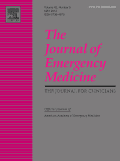
JOURNAL OF EMERGENCY MEDICINE
Connecting research to real-world emergency solutions.The JOURNAL OF EMERGENCY MEDICINE, published by Elsevier Science Inc, is a premier peer-reviewed journal dedicated to advancing the field of emergency medicine. Since its inception in 1983, this journal has served as an essential resource for researchers, clinicians, and students, contributing significantly to evidence-based practices and innovations in the emergency medical landscape. With an impressive ranking of 43 out of 109 in the field of Emergency Medicine according to Scopus, and a current impact factor placing it in the Q2 quartile, this publication is recognized for its rigorous scholarly content and relevance in tackling contemporary issues in emergency care. Although it does not offer open access, the journal remains widely respected for its contribution to the global emergency medicine community, fostering new ideas and discussions that drive the field forward. For those seeking to stay at the forefront of emergency medical research, the JOURNAL OF EMERGENCY MEDICINE is an invaluable addition to your academic endeavors.